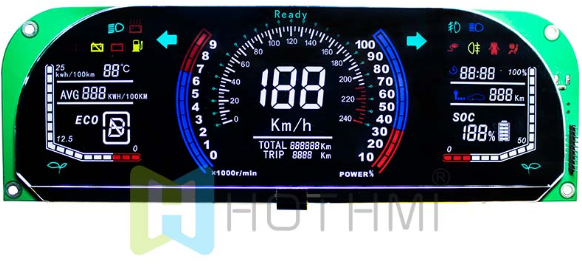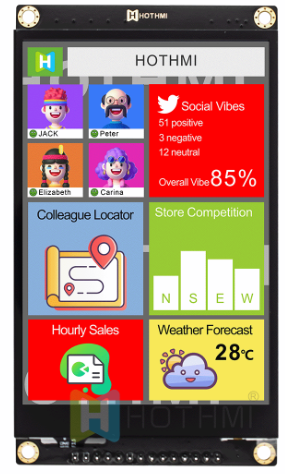The display screen of liquid crystal spatial light modulator usually adopts three forms: twisted nematic panel (TN panel), plane switching panel (IPSQ panel) and multi-quadrant vertical alignment panel (VA panel). The type of panel is directly related to the important parameters of the liquid crystal display, such as response time, color, viewing angle, contrast Q, etc. These performance parameters can intuitively represent the different characteristics of the liquid crystal display. The following is a detailed introduction to these three panels from the perspective of working principle, performance characteristics and their respective advantages.
Twisted Nematic LCD (TN)
Twisted nematic liquid crystal display is also called soft screen. When it is touched, ripples will appear on the screen. Because of its good display performance, low energy consumption, low cost and fast response, it is widely used in communication terminal display, electronic digital products and instrumentation. This type of display is relatively traditional. When in a no-voltage state, the wave crystal molecules are twisted into a 90" alignment under the action of the alignment film, and the light passes through the lower polarizer and liquid crystal molecules and then emits from the upper polarizer; when voltage is applied, except for the liquid crystal near the alignment films on the upper and lower sides, most of the other liquid crystal molecules are arranged vertically, and the light passing through the lower polarizer passes through the liquid crystal layer without deflection. Since the liquid crystal molecules are parallel to the polarization axis of the upper polarizer, the light is absorbed and cannot be emitted. Among them, the relationship between TFTQ and CF polarizers is orthogonal configuration; the alignment film position is orthogonal configuration; the pixel electrode and the common electrode are located on the upper and lower sides of the liquid crystal, respectively, the pixel electrode is on the TFT substrate side and the common electrode is on the CF substrate side: the normal mode is the long white display mode.
Multi-quadrant vertical alignment liquid crystal display (VA)
The tolerance and contrast of multi-quadrant vertical alignment type liquid crystal display screens are relatively high. The black and white in the picture are purer, which makes this type of display have the advantages of wide viewing angle and accurate color, and is widely used in mid-to-high-end liquid crystal displays. The principle is that the liquid crystal molecules are oriented vertically to the glass substrate. When there is no voltage, the light passes through the lower polarizer to form a linear polarization parallel to the short axis of the liquid crystal molecules. The polarization direction cannot rotate, so it is absorbed by the upper polarizer and cannot be emitted; after the voltage is applied, the liquid crystal molecules are deflected along the direction of the electric field, and the light passes through the lower polarizer and the liquid crystal layer. (Elliptical) circular polarization state, can be emitted through the upper polarizer. Among them, the relationship between TFT and CF polarizers is orthogonal configuration; the alignment film is in vertical alignment; the pixel electrode and the common electrode are located on the upper and lower sides of the liquid crystal, respectively, the pixel electrode is on the TFT substrate side, and the common electrode is on the CF substrate side; the normal mode is the long black display mode.

In-Plane Switching (IPS)
Plane switching liquid crystal display is also called hard screen. When this type of display is touched by hand, the picture will not change. It is currently used in many flagship displays and has better color and accuracy than TN. The liquid crystal molecules are in a plane parallel to the glass substrate. When there is no voltage, the light passes through the lower polarizer to form linear polarization parallel to the short axis of the liquid crystal molecules. The polarization direction cannot be rotated, so it is absorbed by the upper polarizer and cannot be emitted. After the voltage is applied, the liquid crystal forms a lateral electric field on the left and right, and the liquid crystal molecules are arranged along the direction of the electric field. After passing through the lower polarizer and the liquid crystal layer, the light is in an (elliptical) circular polarization state and can be emitted through the upper polarizer. Among them, the relationship between TFT and CF polarizers is orthogonal configuration; the alignment film is arranged in parallel; the pixel electrode and the common electrode are on the same side of the liquid crystal, located on the side of the TFT substrate; the normal mode is the long black display mode.
IPS full viewing angleMore product catalogue
For more products, please contact us directly!








 Search
Search





